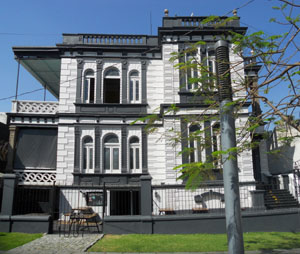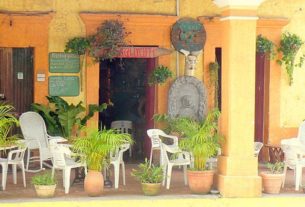Recently I had the pleasure of visiting with some of my wife’s family in northern Mexico. The old house where we stayed is approaching 100 years in age. I won’t say the plumbing was poor, but the real estate was obviously dated and there were some noted problems and historical issues with the plumbing.

Although today it is part of the city, this piece of Mexico Real Estate was originally located just outside the center of Torreon, Coahuila. It was originally built as a simple one-level residence with the workshop in the rear, where a forefather operated a blacksmith shop.
This blacksmith shop was in operation during the era of the Mexican Revolution an era when a horse was a man’s primary means of getting around the countryside. Well-fitted metal horseshoes were critical — not only for the horse, but also for the rider, who could escape and survive to fight another day. The famous Pancho Villa and his entourage had their horses shoed at this blacksmith shop. It was even believed that this group of his rebels had hidden some of their stolen treasure in the shallow well on the property when the federal army came looking for them. Although later investigation by a couple of the grandchildren found no rebel booty, the legend lives on and the stories are embellished with talk about ghosts on the property… perhaps they’re still looking for their gold and horses.
What has this got to do with plumbing? Well, I mentioned a shallow well or as it is called in Spanish, a “noria.” This was typical, as many homes of this era have a shallow hand-dug well as the source of water for the home and — in this case — a business. We still see a few norias here at Lake Chapala and they are still used in many agricultural settings.
Because of their shallow depth, over time the noria is susceptible to surface and ground water contamination.
The community wells that supply our water today are typically drilled very deep into the bedrock. There, the water source is in an anaerobic state and is not contaminated with bacterial contagion. In village locations, the homeowners are typically connected to the village water supply, which is monitored and safer for use than water from the noria. However, some norias are still used as a source of water for residential use in rural locations and, with regular testing, filtration and treatment, this water is of good quality.
In the century-old home in Torreon, the indoor plumbing was only added in the last 60 or 70 years and was considered a luxury at the time of the installation.
Water flow at the various apparatuses is still adequate but — considering the age — it is amazing. It has been necessary to replace water pipes in many other homes of similar age. The pipes used in this older home were oversized and not the typical half-inch diameter used in today’s construction, so any corrosion or deterioration have not affected the overall flow rate through the pipes. However, typical of the era, the plumbing supply pipes are not ventilated, and this has affected the flow rate.
The ventilation pipes are the vertical pipes seen on a roof where water pipes typically turn downwards for distribution inside the house. At this point, the flow of water inside the pipe changes direction. This causes a sudden acceleration of the water through the pipe, triggering a slight backpressure, or resistance to flow, due to the weight of the water pulling down on the remaining water in the pipe. The vertical ventilation pipes allow air to enter the pipe to relieve this slight backpressure, ensuring good flow to the various apparatuses in the house such as sinks, showers, toilets, etc.
The second effect of these vertical ventilation pipes is the elimination of “water hammer.” This is the effect of shutting off a water valve quickly, which cause a slight pressure wave in the pipe due to the momentum of water flow through the pipe. The ventilation pipe allows the wave of water pressure to rise up the pipe and attenuate the “water hammer,” which would shake the pipe and roof tank connections.
The two older sisters who still live in and take care of the old homestead do not want to change the plumbing. But they could take advantage of better water flow by installing vertical ventilation pipes on the roof, where the horizontal water pipes change direction to a downward pipe.
But then again, the ghosts may start banging into or tripping over these new pipes.


